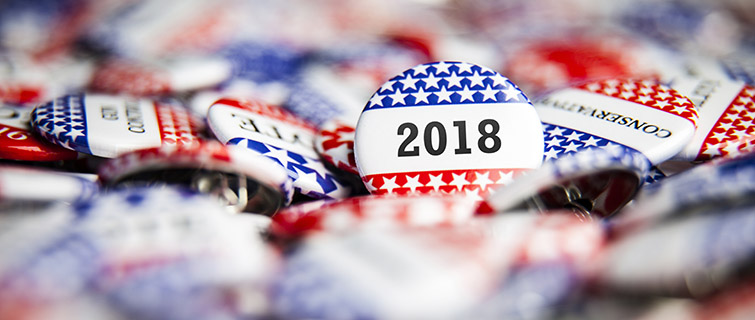
It wasn’t the only thing that doomed Jeb Bush’s presidential campaign, but it might have been the clincher. And it only took two words:
“Low energy.”
That’s how then-presidential candidate Donald Trump described the former Florida governor, a presumed GOP frontrunner who had unrivaled name recognition, a seemingly unbeatable family pedigree, and, at the start of the 2016 primary season, more money than any other candidate, Democrat or Republican. But Bush’s low-key persona, which served him well in running for and being governor, was ill-suited for the intensely partisan national scene—and the negative branding of Donald Trump.
“I don’t think we’ve seen anyone as good at instinctive branding since P.T. Barnum,” said Jon Haber, an instructor in Georgetown University’s Master's in Public Relations & Corporate Communications program.
Brand—or be Branded
They may not have called it branding in the mid-1800s, when Abraham Lincoln was either “Honest Abe” or “the Gorilla,” depending on your point of view, but branding—positive for yourself, negative for your opponent—has always been a part of political campaigns. And it became increasingly sophisticated in the 20th century, as savvy politicians learned to use emerging technologies to spread their message and sharpen their brands: Roosevelt did this with radio in the 1930s; Kennedy used television in the 1960s.
Today, the rise of new media has made branding more important than ever, Haber said. Now, the mainstream media has more competition, and voters get their news from all kinds of sources, at all hours of the day. This fracturing of the news media, together with the explosion of social media, leads people to try make sense of it all by gravitating to those outlets that can assemble all this noise into a consistent narrative, often one that comports with their preexisting positions. There is MSNBC for the Left, Fox News for the Right, and a myriad other sites positioned elsewhere along the political spectrum.
“It recycles conventional wisdom,” said Haber, who, in addition to teaching at Georgetown, is president of Cascade Strategy, Inc., a strategic communications consultancy which he founded.
In this hyper-charged, hyper-partisan environment, the charge for all candidates is simple: Define yourself before your opponent defines you.
A Bigger Megaphone
Trump wields a lot of advantages in this arena.
“If he tweets, it’s news,” Haber says. “He has a bigger megaphone than anybody else.”
And the skill to use it. Before Trump’s inauguration, many observers assumed his staff, wary of unmediated communication, would convince him to stop tweeting. They couldn’t, and he didn’t.
The President has also defied tradition by continuing to hold regular campaign-style rallies, during which his branding acumen is on display. At a rally during the Senate hearings for Judge Brett Kavanaugh, he called Democrats opposed to the nomination “evil people” who want to “destroy people.” Later, in an apparent reference to liberal activists who had hounded Sen. Ted Cruz at a Washington, D.C., restaurant over his support for Kavanaugh, Trump referred to Democrats en masse as “a leftwing mob.”.
“What Trump is essentially saying is, ‘I’ll protect you from the crazies. I’m a stable guy,’” Haber said.
A deft form of negative branding, the “mob” charge was quickly repeated by Senate Majority Leader Mitch McConnell and other high-ranking Republicans.
A Vote for Trump
As in any midterm, depending on the state or district, candidates from the president’s party have to decide how closely to align themselves with the commander in chief. For some, the choice is easy. Corey Stewart, the firebrand GOP Senate candidate in Virginia, and former Republican congressman Ron DeSantis, now running for Florida governor, have fully embraced Trump. DeSantis even produced a tongue-in-cheek TV ad in which he helps his toddler son build a “wall” with blocks. When it comes to either igniting their bases or convincing undecideds, both appear to have chosen the former approach.
Other Republicans are keeping Trump at arm’s length. Although coming into office with the Tea Party wave, Florida Gov. Rick Scott, now a candidate for the Senate, has tried to moderate his image and distance himself from the president.
In more conservative states, Democratic incumbents also have to mold their brands carefully. Hence, the tremendous pressure on West Virginia Sen. Joe Manchin and North Dakota Sen. Heidi Heitkamp to vote “yes” on Judge Kavanaugh’s nomination. In the end, Manchin did; Heitkamp did not.
When pop singer Taylor Swift broke her longtime rule to stay out of politics and endorsed Democrat Phil Bredesen in the Tennessee Senate race over GOP Rep. Marsha Blackburn, (talk about shaking up the brand!) Trump came to Blackburn’s defense, and in a rally expressed publically what the cognoscenti had concluded all along.
“A vote for Marsha,” he said, “is really a vote for me.”
